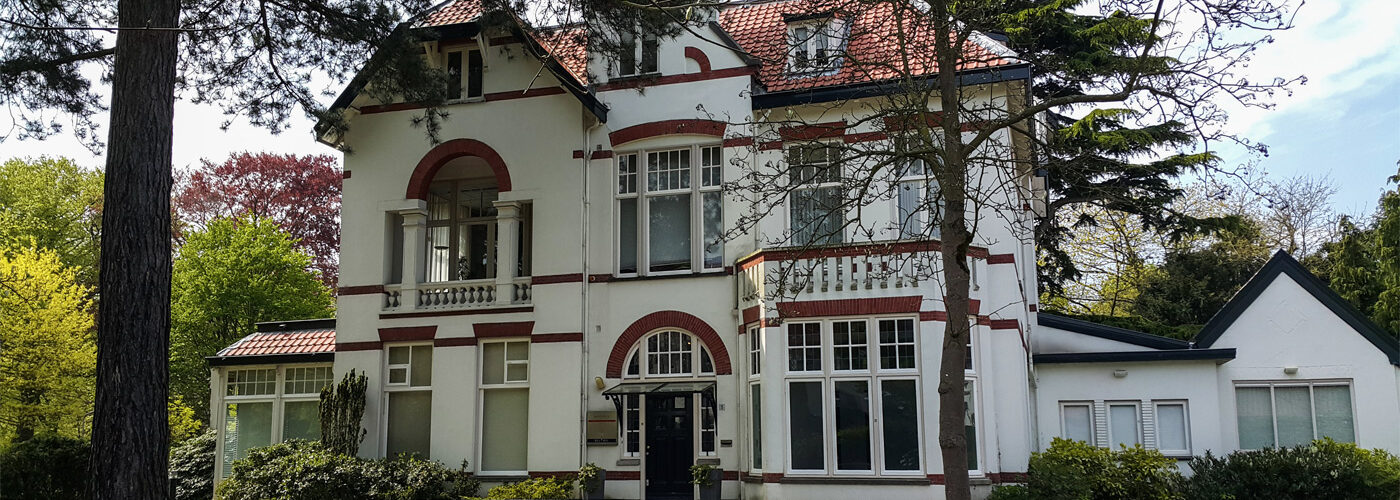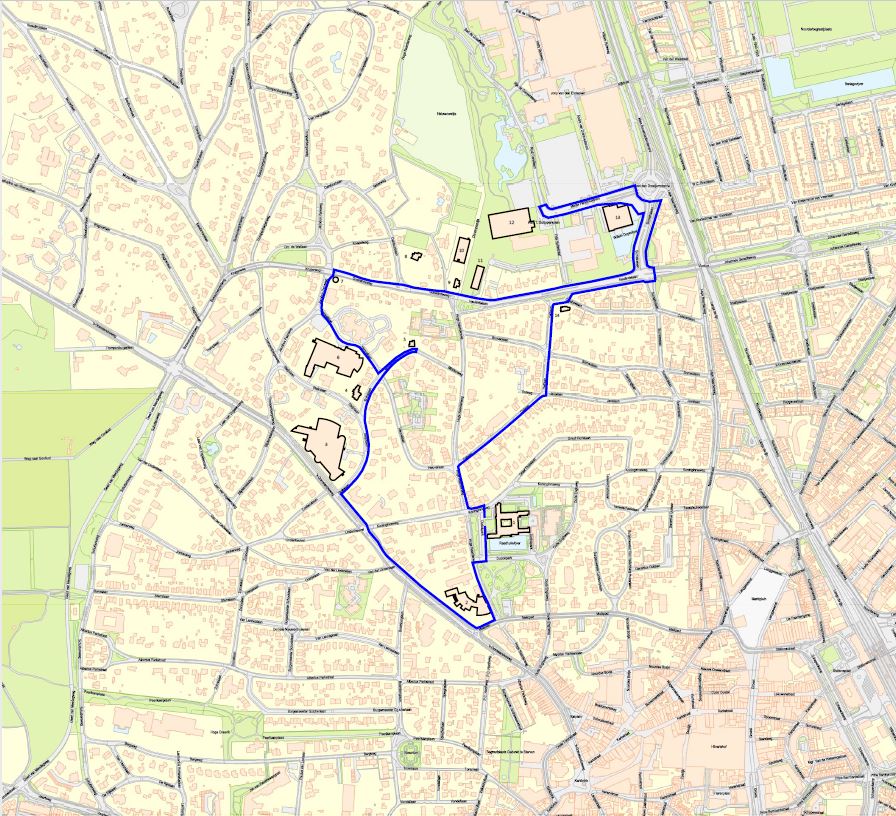
From the Gooise broadcasting villas to the Media Park
An extraordinary walking tour through a neighbourhood that holds both Dutch broadcasting history and architecturally interesting villas. Led by an experienced guide, you will see and hear everything about the area’s urban development into one of the most beautiful villa estates in the Netherlands and the emergence of monumental but also high-profile broadcasting buildings in the birthplace of Hilversum, the ‘Media City’.
Trompenberg
Until the 19th century, Hilversum was a rather unprosperous village with a mostly agricultural population. In 1874 the rail connection between Amsterdam and Amersfoort became operational, and Hilversum was given a train station. Long journeys by barge and stage coach suddenly became unnecessary. This would change Hilversum and the entire region forever. At that time many wealthy Amsterdammers decided to go to Hilversum to live in the green areas around the old village. Hilversum offered these well-off Amsterdammers clean air, countryside living and cheap land to build on. In fact, from that moment the modern commuter was born. Particularly on the west side of the old village, villa estates such as Boomberg and Ministerpark emerged. The area around Trompenberg, being the highest point of Hilversum at 27 metres above sea level, was also developed from the end of the 19th century. In the period between 1880 and 1930, one of the most beautiful villa parks in the Netherlands was created by a number of famous architects, like Salm, Berlage and Hanrath. Several remarkable buildings also sprung up here, such as the water tower and the VARA studio complex.
Media Park
The Media Park is located in the vicinity of these historic villas. Hilversum’s history as the ‘Media City’ goes back as far as the 1920s. In those years, broadcasters such as VARA chose to move out of Amsterdam and settle in Hilversum. Reasons for moving to Hilversum included its central location within the country and the cheap (and stable) land for building. Of crucial importance was the presence of the Nederlandsche Seintoestelling Fabriek (NSF). For a long time, this factory was the largest radio producer in the Netherlands. In the 1930s monumental studio buildings were established in Hilversum. After the war, broadcasters outgrew their pre-war studios and television became popular. To deal with the lack of space and in order to better work together, new plans for a ‘Radio City’ were made, which today is known as the Media Park. In the 1960s and ’70s the architecture of the Media Park was dominated by functionalism. From the beginning of the 1990s the architecture became more iconic. Buildings such as the Villa VPRO and the home of the Netherlands Institute for Sound and Vision attract international attention.
The route
The walking tour takes about 1.5 to 2 hours and starts at the Dudok Architecture Centre, located at the rear of the Town Hall.

Significant buildings along the route:
- Dudokpark 1 (start)
- Raadhuis, W.M. Dudok 1931
- ‘s Gravelandseweg 52
- A.V.R.O. -studio, B. Merkelbach, Ch. Karsten, 1936
- ‘s Gravelandseweg 78-80
- AKN-gebouw, J. Hoogstad, 2000
- Bothalaan 1
- Villa Elwin, W. Langhout, 1902
- Middenweg 3
- De Eersteling, J.W. Hanrath, 1893
- Heuvellaan 33
- VARA-studiocomplex, o.a. A. Eibink, J.A. Snellebrand v.a. 1930
- Jacobus Pennweg 16
- Watertoren, Compagnie Generale des Conduites d´Eau, 1893
- Ceintuubaan 2
- Zonneheuvel, H.P. Berlage, 1896
- Godelindeweg 17
- Veldhoeve, J.W. Hanrath, 1897
- Hoge Naarderweg 78
- Commissariaat voor de media, K.J. van Velsen, 1998 – 2001
- Wim T. Schippersplein 5
- Hoofdkantoor NTR, MVRDV, 1994 – 1997
- Wim T. Schippersplein 1
- Villa VPRO, MVRDV, 1993 – 1997
- Media Parkboulevard 1
- Nederlands Instituut voor Beeld en Geluid, Neutelings Riedijk, 1999 – 2006
- Insulindelaan 19
- De Kameel, Jan Dullaart, 1926
Organisation
Location
Dates
Dates will follow soon on this site. Tour will be in Dutch. Customized architecture walking tours are available too. Send an email to info@dudokarchitecuurcentrum.nl to inform about the possibilities and to plan your visit.
Duration
Price
€15 per person (see above for dates). Private walking tour: €175 per group of maximum 14 participants (dates must be agreed with the DAC)